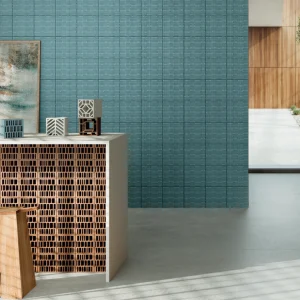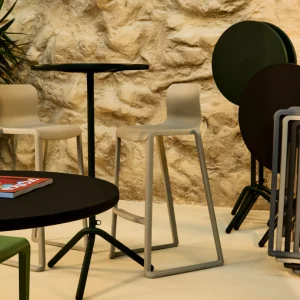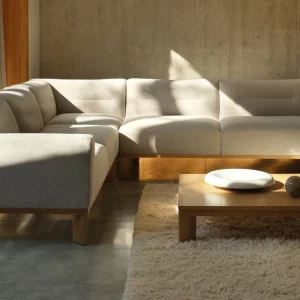In the race to design the most energy-efficient solar powered house, 20 university teams from across US and Europe participated in the Solar Decathlon 2009 competition organized by the US Department of Energy. Team Germany – Technische Universität Darmstadt – who were the 2007 champions, have won the second time this year for their two-story ‘Cube House’.
The cube shape of the house was chosen to provide maximum dimensions and surface area for the solar cells that almost totally cover the exterior: an 11.1kW photovoltaic (PV) system made of 40 single-crystal silicon panels on the roof and about 250 thin-film copper indium gallium diselenide (CIGS) panels on the sides. To maintain comfortable interior temperatures, the façade includes highly insulating, custom vacuum insulation panels and phase-change material in the walls (paraffin) and ceiling (salt hydrate). Automated louver-covered windows were also used to block unwanted solar heat.
The team focused on producing surplus energy by using the maximum overall building dimensions allowed, applying photovoltaics to every available surface, and pushing the envelope with new technologies. The team walked away with the Net Metering contest and performed well in several others, including Architecture, Lighting Design, Comfort Zone, and Hot Water.
The Net Metering contest to measure the houses’ consumption and production of energy was the most heavily weighted contest and Team Germany managed to score a perfect 150 points. They also won the Comfort Zone contest with a score of 92 out of 100 points for maintaining indoor temperatures between 72 and 76 degrees Fahrenheit, and relative humidity between 40% and 55%.
The second place went to the team from the University of Illinois at Urbana-Champaign, whose ‘Gable House’ was one of the first to be assembled and ran like clockwork the entire competition. The team set out to express its regional heritage and sought to create a synergy between old and new. Traditional techniques in homebuilding, along with great advances in technology, blended to create a house that performed exceptionally well in energy efficiency – as demonstrated by the team’s results in all the objective contests.
The Gable Home was also the winner of the Home Entertainment contest, which required students to use electricity generated by their solar houses to run interior and exterior lights, a TV, a computer, and a kitchen appliance to boil water.
Team California – Santa Clara University, California College of the Arts – finished first in both the Architecture and Communications contests, second in Engineering, and tied for third in Market Viability. The team’s ‘Refract House’ broke out of the box and masterfully executed the melding of interior and exterior spaces while offering a consistent and high-quality learning experience to visitors.
Overall, Team Germany earned 908.29 points out of a possible 1,000 to win the competition, ahead of the University of Illinois at Urbana-Champaign with 897.30 points and Team California with 863.08 points.





